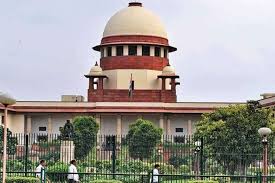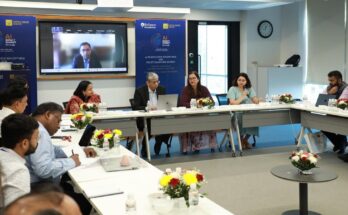With Shweta Chaudhary, Samikhsya Bureau
What is the solution to the Ayodhya dispute?
Legal course or out of court settlement!
The issue, a bone of contention between Hindus and Muslims that has been lingering on since past two centuries, seems far from meeting its logical solution with the three stakeholders — Nirmohi Akhara, Ram Janmbhoomi Nyas (representing Ram Lala) and Sunni Waqf Board adamant on their respective stands.
The minority community is against temple construction at the birthplace of Lord Ram after razing the Babri Masjid built by emperor Babur and Hindus are demanding that a grand temple be constructed at the site.
Filing of suits and counter suits by both the communities in courts to resolve the matter is on till date. The three-judge bench of the Allahabad High court arrived at a landmark judgement in which it ruled that 2.77 acres of land at the disputed site be divided into three equal parts between the fueding parties. This was challenged by all three parties and Supreme Court began hearing the case from December 5 , 2017.
Most recently, Art of Living Guru Sri Sri Ravi Shankar has been made the mediator in the conflict but his role is under suspicion. According to him, Ayodhya will be “enriched” only by a Ram temple.
But what are the repercussions of the Ram temple at Ayodhya?
First and foremost, the minorities’ faith in “India-as their country” will dismantle. A sense of insecurity will instill and they will feel ‘minor’ in true sense of the word.
Secondly, if at all the apex court pronounces judgement in favour of majority community, faith in judiciary will also shake. It would be considered as a ” biased” and “unjustified” pillar of democracy.
Thirdly, India which boasts of being the largest democratic republic and secular nation in the world abiding to take all communities along will be tagged as a “Hindu nation first”.
And lastly, India’s image in the Muslim world will diminish. The Islamic countries might pull their hands of all aids. Thus, temple construction is not a right step.
Moreover, constructing temple at Ayodhya might unleash riots in Uttar Pradesh and other northern states like it did in December 1992 when the structure was razed down. More than 2,000 lives were lost and this time it could be on a larger scale.
So, should temple be there at all?
Weighing all options ,the possible way out is that the three parties divide the land equally and a grand temple be erected at the place along with a small mosque some distance away. The Nirmohi Akhara be also given a share of land to ensure a fair deal. This is what even some representatives of the minority community consent to but the formula has to be accepted by all, in the end.
Well, Ramjanambhoomi dispute has turned out to be another Kashmir like imbroglio, mainly in three ways. One, it has not been resolved since Independence. Secondly, it is a tripartite conflict and lastly it is a complex issue needing decades’ time for a solution.
Though the issue was dormant till Mr Narendra Modi came to power on May 26, 2014. Since then, it is suddenly hogging the limelight courtesy the RSS and the BJP who are promising to make “Ram Lala” sit in the Ayodhya temple this time around to woo Hindu voters.
Temple “can” be built but not at the cost of peace and harmony between different communities thriving in India and without fiddling with the secular fabric of the country for which it is looked upon worldwide.




